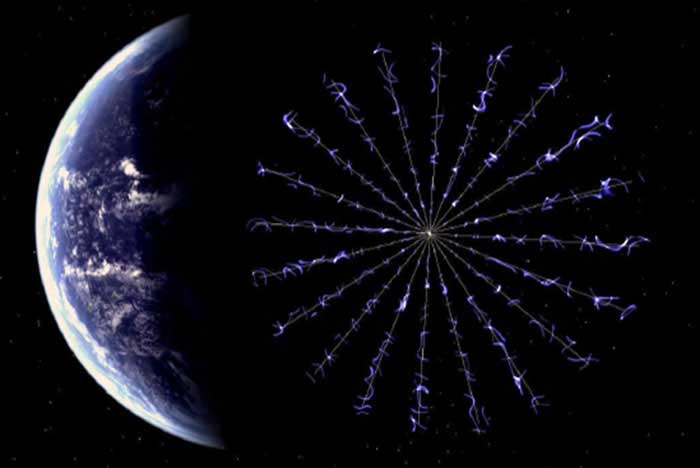Most people interested in space travel technology know that the biggest problem even traveling around our own solar system is the length of time it takes to get anywhere using the current technology. For instance we all know it took Voyager 1 over 30 years to reach interstellar space, which is a quick way of saying, outer space or outside of our solar system. This incredibly long length of time just makes any kind of space travel not only horribly expensive and dangerous but for human species just too long. But what if there is a way to get from Earth to interstellar space inside of 10 years, with talking a journey of 11,000,000,000 miles in under 10 years. That would be an incredibly vast improvement on what we can actually do today.
NASA think they have a way and have been testing the new technology at the Marshall space flight Center in Huntsville, Alabama. The full technical name for what they're testing is the Heliopause Electrostatic Rapid Transit System or HERTS, and what basically is is an electric sail, it uses no propellant except for the solar winds. This is using a giant solar sail which is made of Mylar spread on gossamer threads to catch the incredibly fast and powerful solar winds. In case you don't know the solar winds are a constant stream of protons and other charged particles coming from the sun at speeds from 400 to 750 km per second, that is in excess of 900,000 mph.
This idea has already been tested in Earth orbit but that proved to be a far from perfect solution. The biggest problem they had was actually deploying the giant sail, which proved difficult even in zero gravity, another problem they encounted was that the force of the solar winds is proportional to the distance you are from the sun and once you reach a distance of 464,000,000 miles from the sun the acceleration falls off dramatically. The major difficulty with deploying the sail came because nearly all the winches and cables are miniscule, your deploying a sail that is 20 km long on its radius but weighs only a few grams for each of the gossamer threads.
The most effective method they found to deploy the sail was by spinning it, the centrifugal force involved gradually opened the sail until it was fully deployed, they also found out purely by accident that a slowly rotating sail actually works better than one that is sitting still. How the sail actually works, it is electrostatically charged to repel the fast-moving positively charged protons, that repulsion pushes the spacecraft along exactly like a sailboat running before the wind. You can even steer this type of spacecraft exactly as you would steer a sailboat, you trim its sails by modulating each wire as voltage as the sale is rotating and it reflects less protons, with more pressure being exerted on the other parts of the sail the spacecraft will then turn in the direction that you want it to.

